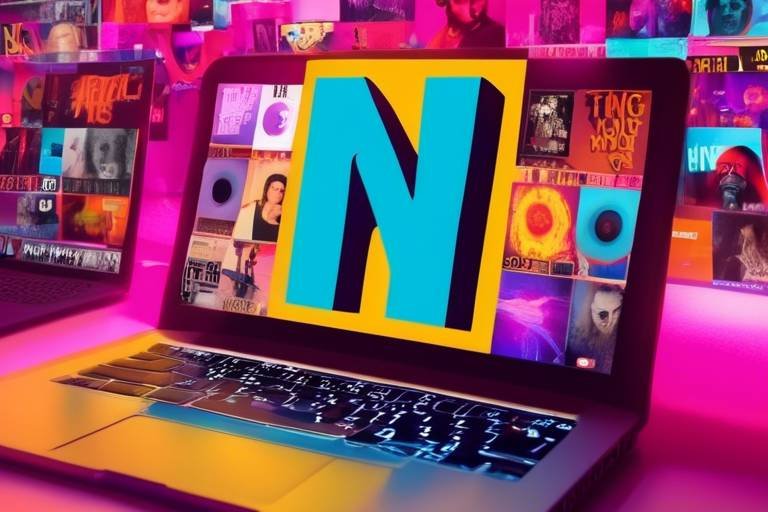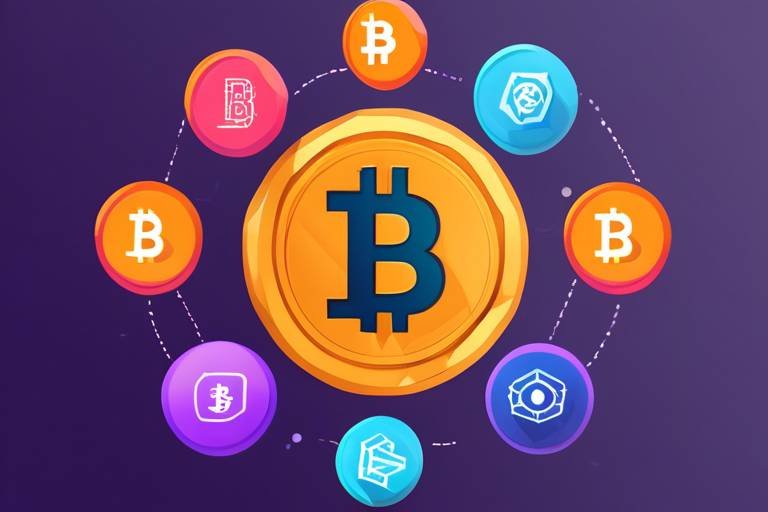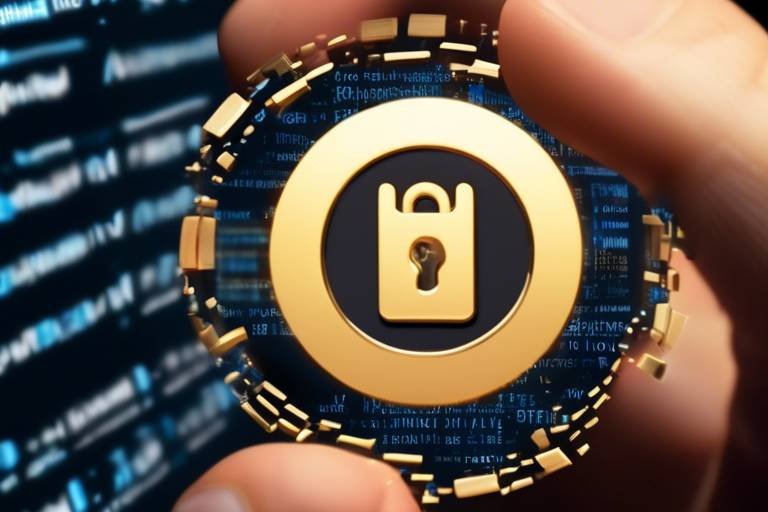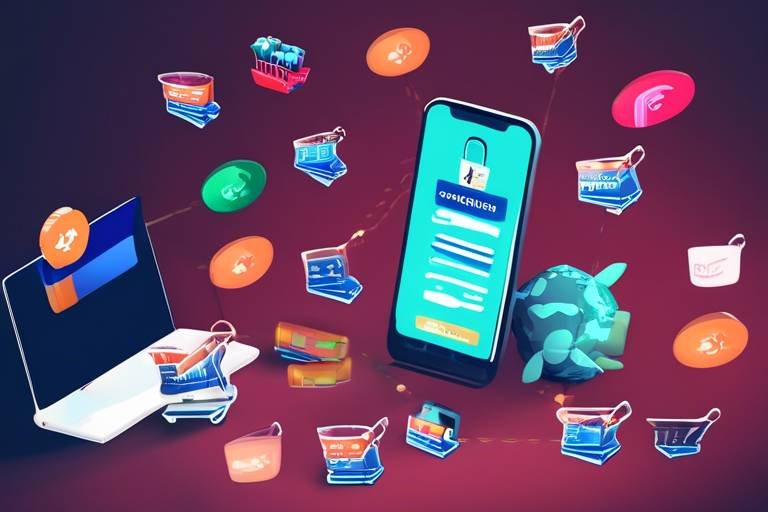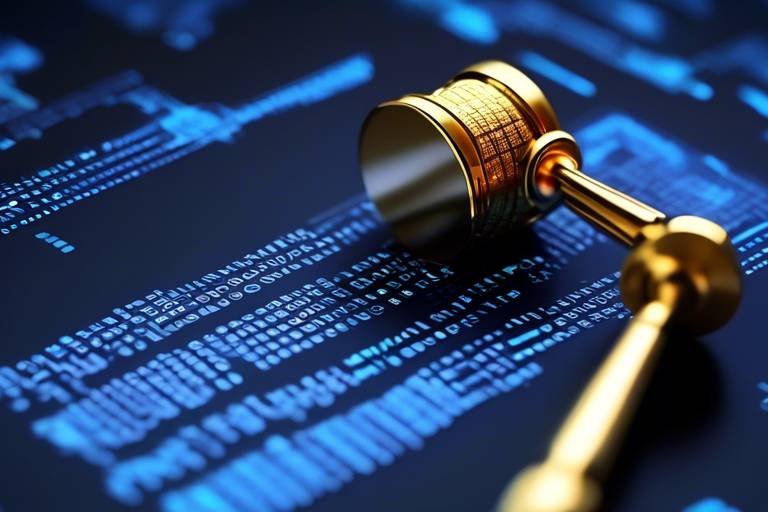The Role of NFTs in the Music Industry
The music industry is undergoing a revolution, and at the heart of this transformation is the rise of Non-Fungible Tokens (NFTs). These digital assets are not just a passing trend; they are reshaping the way artists create, distribute, and monetize their work. In a world where streaming services dominate, NFTs offer a fresh and exciting alternative for musicians to connect with their fans and generate income. Imagine being able to own a piece of your favorite artist's work—something that is truly one-of-a-kind. That's the magic of NFTs!
So, what exactly are NFTs? Unlike cryptocurrencies such as Bitcoin, which are interchangeable, NFTs are unique digital items that cannot be replicated. Each token is stored on a blockchain, a secure and transparent ledger that verifies ownership and authenticity. This uniqueness is what makes them so appealing to artists and fans alike. In essence, NFTs are like digital collectibles, but instead of trading cards or stamps, they represent music tracks, album art, concert tickets, and even exclusive experiences.
One of the most significant impacts of NFTs is the empowerment they provide to artists. Traditionally, musicians have relied on record labels and streaming platforms to distribute their music and earn revenue. However, with NFTs, artists can sell their work directly to fans, cutting out the middleman. This means that musicians can retain a larger share of the profits and have greater control over how their music is presented and sold. It's akin to a farmer selling produce directly at a farmer's market rather than through a supermarket—more profit, less hassle, and a direct connection to the customer.
But the benefits don’t stop at direct sales. NFTs also allow artists to earn royalties from secondary sales. This means that every time an NFT is resold, the original creator can receive a percentage of that sale. This ongoing revenue stream can be a game-changer for artists, providing them with financial sustainability in an industry that has often struggled to support them. Imagine an artist who releases a song as an NFT; every time that NFT changes hands, they continue to earn money from it, much like an author receiving royalties from book sales.
To illustrate the potential of NFTs in the music industry, consider the success stories of artists like Grimes and 3LAU. Grimes sold nearly $6 million worth of NFTs in just a few minutes, showcasing the immense interest and financial potential in this space. Similarly, 3LAU auctioned off his album as an NFT, allowing fans to purchase unique versions of his music and experiences. These examples highlight how artists can leverage NFTs to enhance their visibility and income significantly.
However, despite the exciting opportunities, artists face challenges when venturing into the NFT space. The market is becoming increasingly saturated, making it difficult for new artists to stand out. Additionally, the technical knowledge required to create and sell NFTs can be daunting for those who are not tech-savvy. Artists also need to educate themselves and their fans about NFTs, as many are still unfamiliar with the concept. It's a bit like learning to ride a bike; it may be tricky at first, but with practice and understanding, it can become second nature.
Another significant aspect of NFTs is their ability to foster fan engagement and community building. Artists can offer exclusive content, such as behind-the-scenes footage, personalized messages, or even virtual meet-and-greets, to NFT holders. This creates a sense of belonging and connection between artists and their fans. Imagine being part of a select group that gets to interact with your favorite musician in a way that goes beyond just listening to their music. It’s this kind of intimate engagement that NFTs facilitate, making the fan experience more rewarding and memorable.
The NFT market has witnessed explosive growth, particularly in the music sector. As more artists explore this innovative approach, the demand for music NFTs continues to rise. Current trends indicate that fans are eager to invest in unique digital assets that allow them to support their favorite artists directly. Predictions suggest that this trend will only accelerate, with more platforms emerging to cater to the growing interest in music NFTs.
Various platforms facilitate the creation and sale of music NFTs, each with its unique features. Artists can choose from platforms like OpenSea, Nifty Gateway, and Rarible based on their specific needs and preferences. It's essential for artists to evaluate these platforms carefully to find the right fit for their music and audience.
Navigating the legal landscape of NFTs is crucial for artists. Copyright issues and ownership rights can be complex, and understanding these legal implications is vital to protect their work. Artists should seek legal advice to ensure they are fully aware of their rights when creating and selling NFTs.
- What are NFTs? NFTs are unique digital assets verified using blockchain technology, representing ownership of a specific item or piece of content.
- How do NFTs benefit artists? NFTs allow artists to sell their work directly to fans, earn royalties from secondary sales, and maintain greater control over their music.
- Are NFTs environmentally friendly? The environmental impact of NFTs is a topic of ongoing debate, as the energy consumption of blockchain technology can be significant.
- Can anyone create an NFT? Yes, anyone can create an NFT, but understanding the process and legal implications is crucial.

Understanding NFTs
Non-Fungible Tokens, or NFTs, are revolutionizing the digital landscape by offering a unique way to own and trade digital assets. Unlike traditional cryptocurrencies such as Bitcoin or Ethereum, which are fungible and can be exchanged for one another, NFTs are one-of-a-kind tokens that represent ownership of a specific item or piece of content on the blockchain. Think of NFTs as digital collectibles—each one is distinct, much like a rare trading card or a unique piece of art.
The underlying technology behind NFTs is blockchain, a decentralized ledger that records transactions across many computers in such a way that the registered transactions cannot be altered retroactively. This characteristic ensures the authenticity and provenance of each NFT, making it a secure way to buy and sell digital assets. When you purchase an NFT, you’re not just buying a digital file; you’re acquiring a verified ownership certificate that proves your ownership and can be tracked over time.
One of the most exciting aspects of NFTs is their versatility. They can represent various forms of digital content, including:
- Music - Songs, albums, and even concert tickets.
- Art - Digital paintings, illustrations, and animations.
- Videos - Clips, short films, and exclusive behind-the-scenes content.
- Virtual Real Estate - Land and properties in virtual worlds.
This versatility opens up a world of possibilities for artists and creators. They can tokenize their work, allowing them to sell it directly to consumers without needing intermediaries. This direct-to-fan model not only enhances the connection between artists and their audience but also empowers creators by providing them with more control over their intellectual property. As a result, NFTs are not just a passing trend; they are fundamentally changing how we perceive ownership and value in the digital realm.
Moreover, NFTs are becoming increasingly significant in the context of digital scarcity. In a world where digital files can be copied infinitely, NFTs create a sense of exclusivity. Just as owning a limited edition print of a famous artwork can hold more value than a mass-produced replica, owning an NFT can signify a special connection to the creator and their work. This sense of ownership is what drives collectors and fans to invest in NFTs, making them a valuable asset in the contemporary art and music markets.
In conclusion, understanding NFTs is crucial for anyone looking to navigate the evolving landscape of digital ownership. As we continue to explore their potential, it's clear that NFTs are not merely a technological innovation; they represent a paradigm shift in how we engage with art, music, and each other in the digital age.

Impact on Artists
The rise of Non-Fungible Tokens (NFTs) is nothing short of revolutionary for artists in the music industry. Imagine a world where musicians can directly connect with their fans and sell their work without the interference of traditional record labels. NFTs are making this dream a reality! By allowing artists to sell their music as unique digital assets, they can bypass the usual gatekeepers who often take a hefty cut of their earnings. This newfound freedom empowers artists to take control of their careers and financial futures.
One of the most exciting aspects of NFTs is the potential for direct sales. Artists can create and sell their music, album art, and even exclusive behind-the-scenes content as NFTs. This not only allows them to earn money upfront but also builds a deeper connection with their audience. Fans love the idea of owning a piece of their favorite artist's work, and NFTs provide that opportunity in a way that was never possible before. For instance, when an artist releases an NFT of a new song, fans can purchase it, knowing that they own something truly unique and scarce. This sense of ownership fosters a stronger bond between the artist and their supporters.
Furthermore, NFTs introduce a fascinating concept: royalties from secondary sales. Unlike traditional music sales, where artists only earn money once, NFTs can be programmed to provide creators with a percentage of future sales. This means that every time an NFT is resold, the original artist can earn a cut. It's like having a never-ending stream of income! This model not only benefits the artist financially but also encourages them to create more, knowing that their work can continue to generate revenue long after its initial release.
Understanding how this model works is crucial for artists looking to leverage NFTs. When an artist sells an NFT, they can set a percentage for royalties on any future sales. For example, if an artist sells an NFT for $100 and sets a 10% royalty, they will earn $10 every time that NFT is sold again. This innovative approach to royalties can significantly enhance an artist's financial sustainability, allowing them to focus on their craft without constantly worrying about making ends meet.
To illustrate the potential of NFTs, let's look at a few artists who have successfully embraced this technology. For instance, the electronic music producer 3LAU made headlines when he sold $11.6 million worth of NFTs in a single auction. Not only did he sell exclusive tracks, but he also offered fans experiences like one-on-one Zoom calls. Similarly, Grimes, the pop artist, sold a series of digital artworks as NFTs, raking in nearly $6 million. These examples highlight how artists can use NFTs to gain visibility and generate significant income, making it clear that the possibilities are endless.
However, it's not all sunshine and rainbows. Artists face several challenges when adopting NFTs. The market can be saturated, making it difficult for new artists to stand out. Additionally, the technology behind NFTs can be daunting for those who are not tech-savvy. There's also a pressing need for education in this new space, as many artists may not fully understand how to create, market, or sell their NFTs effectively. Overcoming these hurdles is essential for artists to thrive in the NFT landscape.
In conclusion, NFTs are undeniably transforming the music industry by empowering artists in unprecedented ways. From direct sales to ongoing royalties, the benefits are monumental. As artists navigate this new terrain, they must be aware of the challenges but also embrace the opportunities that NFTs present. The future of music is being reshaped, and artists are at the forefront of this exciting revolution.
- What are NFTs? NFTs, or Non-Fungible Tokens, are unique digital assets verified using blockchain technology, allowing ownership and provenance of digital items.
- How can artists benefit from NFTs? Artists can sell their music and art directly to fans, earn royalties from secondary sales, and create exclusive experiences for their audience.
- What challenges do artists face with NFTs? Challenges include market saturation, technological barriers, and the need for education on how to effectively create and sell NFTs.
- Are NFTs the future of music? While it's still early, NFTs have the potential to reshape how music is consumed and owned, paving the way for new revenue streams for artists.

Direct Sales and Royalties
In the ever-evolving landscape of the music industry, Non-Fungible Tokens (NFTs) are redefining how artists can monetize their work. One of the most exciting aspects of NFTs is the ability for artists to engage in direct sales. This means that musicians can sell their music, artwork, or exclusive content directly to fans without needing a record label or intermediary. Imagine being able to skip the middleman and keep a larger share of your earnings! This direct connection not only enhances the artist-fan relationship but also allows musicians to set their own prices and terms for their work.
But the benefits don’t stop there. NFTs also come with built-in royalty mechanisms that enable artists to earn money from secondary sales. This is a game-changer! Traditionally, once an artist sells their music or artwork, they receive a one-time payment. However, with NFTs, artists can program royalties into the smart contracts that govern these tokens. This means that every time their NFT is resold, the artist can earn a percentage of the sale. For example, if an artist sells an NFT for $1,000 and includes a 10% royalty, they would earn $100 every time that NFT is resold, no matter how many times it changes hands. This ongoing revenue stream can significantly enhance an artist's financial sustainability.
To illustrate this further, consider the following table that summarizes the potential earnings from direct sales and royalties:
| Sale Type | Initial Sale Price | Royalty Percentage | Earnings from Resale |
|---|---|---|---|
| Direct Sale | $1,000 | N/A | $1,000 |
| Resale | $1,500 | 10% | $150 |
| Second Resale | $2,000 | 10% | $200 |
As you can see, the potential for artists to earn from both direct sales and ongoing royalties is substantial. This model not only incentivizes artists to create more but also encourages them to build a loyal fanbase that values their work. However, while the opportunities are exciting, it’s essential for artists to understand the technical aspects of NFTs and the platforms they choose to utilize. This way, they can maximize their earnings while ensuring that their rights and interests are protected.
In conclusion, the direct sales and royalty features of NFTs present a revolutionary opportunity for artists in the music industry. By embracing this technology, musicians can take control of their careers, foster deeper connections with their fans, and secure a sustainable financial future. The power is now in their hands, and the possibilities are as limitless as their creativity!

Case Studies of Successful Artists
The rise of Non-Fungible Tokens (NFTs) has opened up a new frontier for artists in the music industry, allowing them to connect with their fans in unprecedented ways. One of the most notable success stories is that of Grimes, the Canadian musician and visual artist. In March 2021, she sold a collection of NFT artworks for a staggering $6 million. This wasn't just a simple sale; it was a unique blend of music and art, showcasing how NFTs can serve as a powerful tool for artists to monetize their creativity. Grimes' approach included exclusive music tracks and visual art, providing her fans with a one-of-a-kind experience that traditional sales models simply cannot match.
Another compelling case is 3LAU, an electronic music producer who made headlines by selling his album as an NFT for over $11 million. What sets 3LAU apart is his innovative approach to fan engagement. He offered buyers the chance to remix his songs and even create personalized experiences, such as one-on-one video calls. This level of interaction not only increased the value of his NFTs but also fostered a sense of community among his fans. By leveraging the unique capabilities of NFTs, 3LAU transformed his music into a shared experience, illustrating how artists can cultivate deeper connections with their audiences.
Kings of Leon is another prominent example. They became the first band to release an album as an NFT, titled When You See Yourself. This release included special perks such as exclusive audiovisual art and front-row concert tickets. The band’s foray into NFTs reflects a growing trend where artists are not just selling music but are also creating a holistic experience around it. Their innovative strategy not only generated significant revenue but also set a precedent for other artists looking to explore the NFT space.
These case studies highlight a crucial aspect of NFTs: the ability to create unique value propositions that extend beyond the music itself. By integrating art, experiences, and community engagement into their NFT offerings, these artists are not only generating income but also enhancing their brand and visibility in a crowded market. However, it's essential to note that the success of these artists also stems from their understanding of their audience and the digital landscape. They harnessed the power of social media and online communities to promote their NFT launches, ensuring that their fanbase was engaged and excited about the new offerings.
Yet, while these success stories are inspiring, they also come with lessons. Artists must be prepared to navigate the complexities of the NFT market, including understanding the technology, managing their digital presence, and addressing potential challenges such as market saturation. As the NFT space continues to evolve, the experiences of artists like Grimes, 3LAU, and Kings of Leon serve as valuable case studies for others looking to make their mark in this innovative realm.
- What are NFTs? NFTs, or Non-Fungible Tokens, are unique digital assets verified using blockchain technology, making them distinct from cryptocurrencies.
- How can artists benefit from NFTs? Artists can sell their music and art as NFTs, allowing them to monetize their work directly and earn royalties from secondary sales.
- What challenges do artists face with NFTs? Challenges include market saturation, technological barriers, and the need for education about the NFT space.
- Are there successful examples of artists using NFTs? Yes, artists like Grimes, 3LAU, and Kings of Leon have successfully utilized NFTs to enhance their careers and engage with fans.

Challenges Faced by Artists
As exciting as the world of Non-Fungible Tokens (NFTs) is, it’s not all rainbows and sunshine for artists diving into this new frontier. The music industry has always been a challenging landscape, but the introduction of NFTs has brought along its own unique set of hurdles. One of the most pressing issues is the market saturation. With a plethora of artists jumping on the NFT bandwagon, it can be incredibly difficult for any single piece of art or music to stand out. Think of it like a crowded concert where every musician is vying for the audience's attention. How do you make your voice heard in such a noisy environment?
Moreover, there's a significant technological barrier that many artists face. Not all musicians are tech-savvy, and the process of creating, minting, and selling NFTs can be daunting. Imagine trying to navigate a complex maze without a map; that’s how some artists feel when they first encounter the blockchain technology behind NFTs. There’s also the added pressure of needing to understand how to market these digital assets effectively. Without a solid grasp of digital marketing strategies, even the most talented artists might find themselves lost in the digital ether.
Another crucial challenge is the need for education in this rapidly evolving space. Many artists are still unfamiliar with the concept of NFTs, let alone how to leverage them for their benefit. This lack of knowledge can lead to missed opportunities and potential financial losses. It’s essential for artists to seek out resources and communities that can provide guidance and support as they navigate this new terrain. Just like learning to play a new instrument, mastering the NFT landscape requires time, patience, and practice.
Additionally, the environmental impact of NFTs has come under scrutiny. The energy consumption involved in minting and trading NFTs has raised questions about sustainability. Artists who are passionate about environmental issues may find themselves at a crossroads, having to choose between embracing this new technology and adhering to their values. This dilemma can be particularly challenging for those who want to maintain a positive public image while still exploring innovative ways to monetize their work.
In summary, while NFTs present exciting opportunities for artists, the journey is not without its challenges. From market saturation and technological barriers to the need for education and environmental concerns, artists must navigate a complex landscape. However, with the right tools, knowledge, and community support, many artists are finding ways to overcome these obstacles and thrive in the NFT space.
- What are NFTs? NFTs, or Non-Fungible Tokens, are unique digital assets verified using blockchain technology, allowing for ownership and provenance of digital items.
- How can artists benefit from NFTs? Artists can sell their music and artwork directly as NFTs, bypassing traditional industry gatekeepers and earning royalties from secondary sales.
- What challenges do artists face with NFTs? Artists encounter market saturation, technological barriers, a lack of education, and environmental concerns when entering the NFT space.
- Are NFTs environmentally friendly? The environmental impact of NFTs has been a topic of discussion, as the energy consumption for minting and trading can be significant.

Fan Engagement and Community Building
In today's digital age, fan engagement has taken on a new meaning, and NFTs are at the forefront of this transformation. Imagine a world where fans are not just passive listeners but active participants in an artist's journey. NFTs create that world, allowing artists to forge deeper connections with their audience. Through the sale of unique digital assets, artists can offer fans exclusive content that goes beyond just music. This can include behind-the-scenes footage, personalized messages, or even access to private events. Such offerings not only enhance the fan experience but also foster a sense of belonging and community.
When fans purchase an NFT, they aren't just buying a piece of art or a song; they are investing in a relationship with the artist. This investment can manifest in various ways, such as limited edition releases or exclusive listening parties. For instance, an artist might release a special track only available to NFT holders, creating a buzz and excitement among fans. This exclusivity not only drives sales but also encourages fans to engage with the artist on social media, share their experiences, and invite others to join the community.
Moreover, NFTs can facilitate community building through interactive features. Artists can create virtual meet-and-greets or Q&A sessions exclusively for NFT holders. This level of access makes fans feel valued and appreciated, strengthening their loyalty. Additionally, artists can use NFTs to create a sense of urgency and excitement around their releases. For example, limited-time offers or countdowns to a drop can keep fans on the edge of their seats, eagerly anticipating the moment they can snag a unique piece of art or music.
However, the impact of NFTs on fan engagement goes beyond mere transactions. They can also help artists gather valuable insights about their fanbase. By analyzing which NFTs are most popular or how often fans engage with their content, artists can tailor their offerings to better meet their audience's desires. This not only enhances the fan experience but also allows artists to evolve and grow alongside their community.
In conclusion, NFTs have revolutionized the way artists engage with their fans. By offering exclusive content and creating opportunities for interaction, artists are not just selling music; they are building a vibrant community. In this new landscape, fans are empowered to connect, share, and support their favorite artists like never before. The potential for fan engagement and community building through NFTs is immense, and as the music industry continues to evolve, we can only expect this trend to grow.
- What are NFTs? NFTs, or Non-Fungible Tokens, are unique digital assets verified on a blockchain, representing ownership of a specific item or piece of content.
- How do NFTs benefit artists? NFTs allow artists to monetize their work directly, bypassing traditional industry gatekeepers, and earn royalties from secondary sales.
- Can fans interact with artists through NFTs? Yes! NFTs create opportunities for fans to engage with artists through exclusive content, experiences, and community-building activities.
- What challenges do artists face with NFTs? Artists may encounter market saturation, technological barriers, and the need for education in the NFT space.
- How can artists choose the right platform for NFTs? Artists should consider factors like user base, fees, and features when selecting a platform for creating and selling their NFTs.
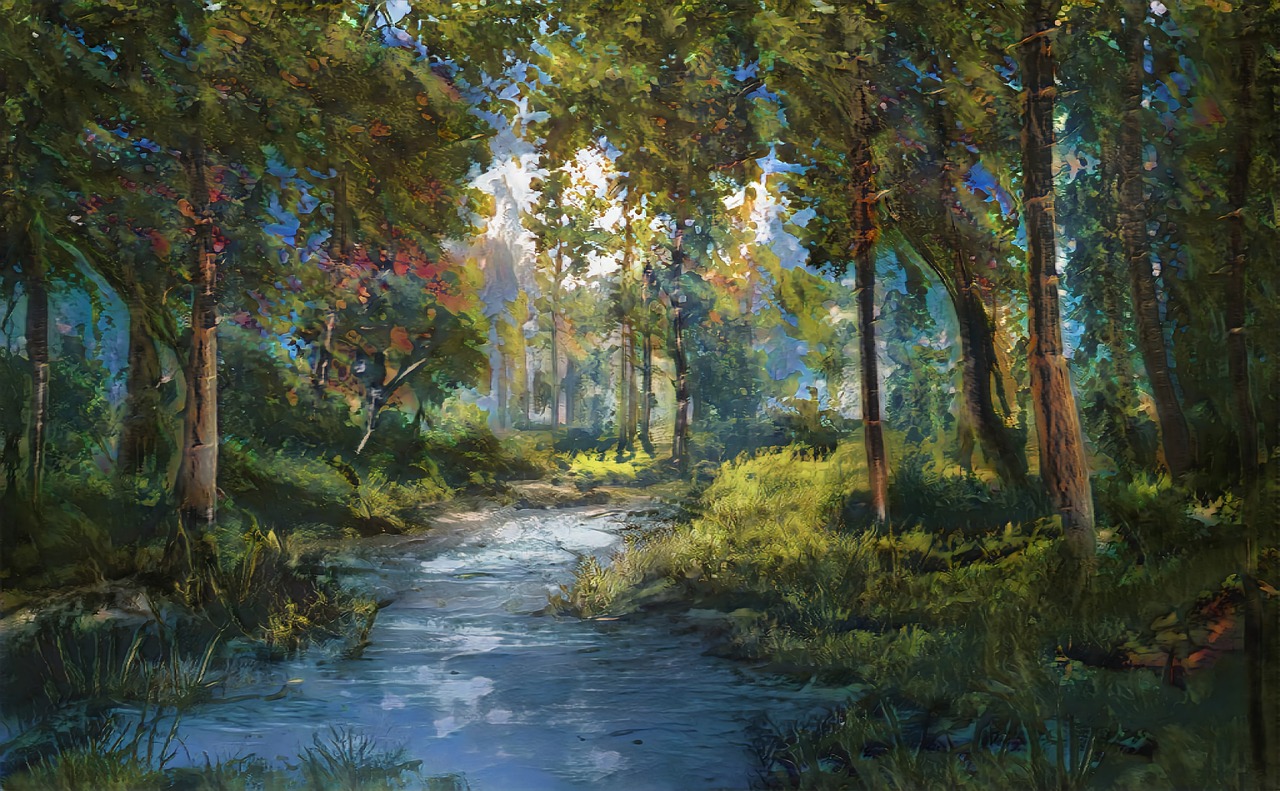
Market Trends and Growth
The NFT market has experienced an *explosive* growth trajectory, especially within the music sector. As artists and fans alike embrace this innovative technology, it's essential to explore the current trends that are shaping the landscape. In 2021 alone, the NFT market surged to over $40 billion, and projections suggest that this figure could double in the coming years. This rapid expansion is not just a fleeting trend; it's a sign of a fundamental shift in how music is created, distributed, and consumed.
One of the most notable trends is the increasing **diversity of NFT offerings**. Artists are no longer limited to just selling music tracks; they are now exploring a plethora of digital assets, including album artwork, exclusive concert tickets, and personalized fan experiences. This diversification allows musicians to connect with their audience on a more intimate level, fostering a sense of community and loyalty. For instance, an artist might sell a limited edition NFT that includes a behind-the-scenes video of their recording process, giving fans a glimpse into their creative journey.
Moreover, the rise of **secondary markets** has been a game-changer. NFTs can be resold, allowing artists to earn royalties from each subsequent sale. This model not only provides a continuous revenue stream but also incentivizes artists to create high-quality content that fans will want to trade. Imagine owning a piece of music history and knowing that every time it changes hands, the original artist benefits financially. This is a revolutionary concept that challenges traditional revenue models in the music industry.
As we look ahead, it's crucial to consider the **technological advancements** that are driving this growth. Blockchain technology, which underpins NFTs, is becoming more accessible and user-friendly. Artists who may have previously shied away from tech are now finding platforms that simplify the process of creating and selling NFTs. Additionally, collaborations between tech companies and musicians are becoming more common, leading to innovative ways to engage fans. For example, virtual concerts featuring NFT ticketing are gaining popularity, allowing fans to experience live music in a digital space.
However, with growth comes challenges. The market is becoming increasingly saturated, making it more difficult for new artists to stand out. It's essential for musicians to develop a unique brand and marketing strategy to capture the attention of potential buyers. While the opportunities are vast, the competition is fierce, and artists must be prepared to invest time and effort into promoting their NFT offerings.
In summary, the NFT market in the music industry is on a remarkable upward trajectory, fueled by technological advancements, diverse offerings, and innovative revenue models. As artists continue to explore the potential of NFTs, the landscape will undoubtedly evolve, presenting new opportunities and challenges. Staying informed about market trends will be crucial for both artists and fans as they navigate this exciting new frontier.
- What are NFTs? Non-Fungible Tokens (NFTs) are unique digital assets verified using blockchain technology.
- How do NFTs benefit artists? NFTs allow artists to sell their work directly to fans, earn royalties from secondary sales, and engage their audience in new ways.
- What are some popular platforms for music NFTs? Some popular platforms include OpenSea, Rarible, and Foundation, each offering unique features for artists.
- Are there legal considerations for artists using NFTs? Yes, artists must navigate copyright issues and understand ownership rights when creating and selling NFTs.

Platforms for Music NFTs
When it comes to diving into the world of Music NFTs, the choice of platform can make all the difference. Think of it like choosing the right stage for your performance; the right platform amplifies your reach and enhances your engagement with fans. There are several platforms specifically tailored for artists looking to sell their music as NFTs, each offering unique features and functionalities. Some of the most popular platforms include:
- OpenSea: This is one of the largest NFT marketplaces where artists can mint and sell their music NFTs alongside other digital art. Its user-friendly interface and extensive audience make it a popular choice.
- Rarible: Known for its community-driven approach, Rarible allows artists to create and sell music NFTs while also earning from royalties on secondary sales.
- Foundation: A platform that focuses on high-quality art, Foundation is a great choice for musicians who want to collaborate with visual artists and create unique multimedia experiences.
- Mintbase: This platform allows users to create NFTs without needing extensive technical knowledge. It's perfect for artists who are just starting their NFT journey.
- Catalog: Specifically designed for musicians, Catalog allows artists to release one-of-a-kind music NFTs, creating a sense of exclusivity and urgency among fans.
Choosing the right platform depends on various factors, including your target audience, the type of music you produce, and your overall goals. For instance, if you're looking to reach a broader audience, OpenSea might be your best bet. On the other hand, if exclusivity and high-quality collaborations are your priority, Foundation could be the way to go.
Moreover, many platforms provide detailed analytics and marketing tools, enabling artists to track their sales performance and understand their audience better. This can be invaluable for planning future releases and engaging with fans in a more meaningful way. As you explore these platforms, consider the following:
| Platform | Best For | Key Features |
|---|---|---|
| OpenSea | Broad Audience | Large marketplace, user-friendly interface |
| Rarible | Royalties | Community-driven, secondary sales royalties |
| Foundation | High-Quality Art | Collaboration with visual artists, curated content |
| Mintbase | Beginners | Easy minting process, no tech knowledge required |
| Catalog | Exclusivity | Unique music releases, limited editions |
In summary, the emergence of platforms for music NFTs is reshaping how artists distribute their work and connect with fans. As the NFT space continues to grow, staying informed about these platforms and their offerings will be crucial for artists looking to thrive in this new digital landscape. By strategically choosing the right platform, musicians can not only enhance their visibility but also create deeper connections with their audience, ultimately leading to a more sustainable and rewarding career.
Q1: What are Music NFTs?
A1: Music NFTs are unique digital assets that represent ownership of a specific piece of music, artwork, or experience. They are created using blockchain technology, ensuring authenticity and scarcity.
Q2: How can artists benefit from selling Music NFTs?
A2: Artists can monetize their work directly, earn royalties from secondary sales, and engage with fans through exclusive content and experiences.
Q3: Are there any risks associated with Music NFTs?
A3: Yes, artists may face challenges such as market saturation, technological barriers, and the need for education about the NFT space.
Q4: What should artists consider when choosing an NFT platform?
A4: Artists should consider their target audience, the type of music they produce, and the specific features offered by each platform, such as ease of use, royalty structures, and marketing tools.

Legal and Copyright Considerations
Navigating the legal landscape of NFTs is crucial for artists venturing into this innovative space. As the music industry embraces Non-Fungible Tokens, understanding the legal implications surrounding copyright, ownership rights, and licensing becomes increasingly important. Unlike traditional music distribution, where rights are often muddled and ownership can be ambiguous, NFTs offer a unique opportunity to clarify these issues. However, this clarity comes with its own set of challenges.
First and foremost, artists need to comprehend that while NFTs can represent ownership of a digital asset, they do not automatically confer copyright. Copyright remains with the original creator unless explicitly transferred. This means that when an artist sells an NFT of their music, they must clearly define what rights the buyer is acquiring. Are they purchasing the right to listen, to resell, or to use the music in another project? Clear communication is essential to avoid potential disputes.
Additionally, the transfer of rights should be documented in a legal agreement. This agreement can outline the specific rights being sold, any royalties associated with future sales, and the responsibilities of both parties. The absence of such documentation can lead to misunderstandings and legal conflicts down the line. As the saying goes, "An ounce of prevention is worth a pound of cure," and this rings especially true in the world of NFTs.
Moreover, artists should be aware of the potential for copyright infringement. With the ease of creating and selling NFTs, there’s a risk that individuals may mint NFTs of music they do not own, leading to legal battles. To mitigate this risk, artists should conduct thorough due diligence before purchasing or selling NFTs, ensuring that the content is original or that they have the necessary rights to sell it.
To help artists navigate these complex waters, here’s a quick table summarizing some key legal considerations when dealing with NFTs in the music industry:
| Legal Aspect | Consideration |
|---|---|
| Copyright | Ownership remains with the creator unless explicitly transferred. |
| Transfer of Rights | Document rights sold in a legal agreement to avoid disputes. |
| Infringement Risks | Ensure the content is original or rights are secured before minting. |
In addition to these considerations, artists must also stay informed about the evolving regulatory landscape surrounding NFTs. As governments and regulatory bodies begin to take notice of this burgeoning market, new laws and regulations may emerge, impacting how NFTs are created, sold, and traded. Keeping abreast of these changes is vital for any artist looking to thrive in the NFT space.
In conclusion, while NFTs offer exciting opportunities for artists to monetize their work and engage with fans, they also bring a host of legal and copyright challenges that must be addressed. By understanding these issues and taking proactive steps to protect their rights, artists can navigate this new frontier with confidence and creativity.
- What is an NFT? An NFT, or Non-Fungible Token, is a unique digital asset that represents ownership of a specific item or piece of content, verified using blockchain technology.
- Do I retain copyright when I sell an NFT? Generally, yes. Selling an NFT does not automatically transfer copyright unless explicitly stated in a legal agreement.
- How can I protect my rights when selling NFTs? Document the rights being sold in a legal agreement and ensure that you have the necessary rights to the content.
- What should I do if I believe my work has been infringed upon? Consult with a legal professional to explore your options for addressing copyright infringement.
Frequently Asked Questions
- What are NFTs and how do they work in the music industry?
NFTs, or Non-Fungible Tokens, are unique digital assets that represent ownership of a specific item, often verified through blockchain technology. In the music industry, they allow artists to sell their music, artwork, and experiences directly to fans, creating new revenue streams while bypassing traditional intermediaries.
- How can artists benefit from selling their music as NFTs?
By selling music as NFTs, artists can directly monetize their work, retain a larger share of the profits, and engage more intimately with their fans. This model also allows them to earn royalties from secondary sales, creating ongoing income opportunities beyond the initial sale.
- What are some successful examples of artists using NFTs?
Several artists have successfully embraced NFTs, such as Kings of Leon, who released their album as an NFT, and Grimes, who sold digital art for millions. These examples highlight how NFTs can enhance visibility and provide substantial financial benefits to musicians.
- What challenges do artists face when adopting NFTs?
While NFTs offer exciting opportunities, artists may encounter challenges like market saturation, technical barriers, and a lack of understanding about how to navigate this new landscape. Educating themselves and their fanbase is crucial for overcoming these hurdles.
- How do NFTs enhance fan engagement?
NFTs create unique opportunities for fans to interact with their favorite artists by offering exclusive content, behind-the-scenes access, and even personalized experiences. This fosters a deeper connection between artists and their audiences, transforming how fans experience music.
- What are the current trends in the NFT music market?
The NFT music market has experienced explosive growth, with increasing sales and a surge in interest from both artists and fans. Current trends indicate a shift towards unique, limited-edition releases, as well as a growing acceptance of NFTs as a legitimate form of music consumption.
- Which platforms are best for creating and selling music NFTs?
Popular platforms for music NFTs include OpenSea, Rarible, and Foundation. Each platform has its own features and audience, so artists should consider their specific needs and goals when choosing where to sell their NFTs.
- What legal considerations should artists keep in mind regarding NFTs?
Artists must navigate various legal aspects when dealing with NFTs, including copyright issues and ownership rights. Understanding these legal implications is crucial to protect their work and ensure they are compliant with existing laws in the digital landscape.

